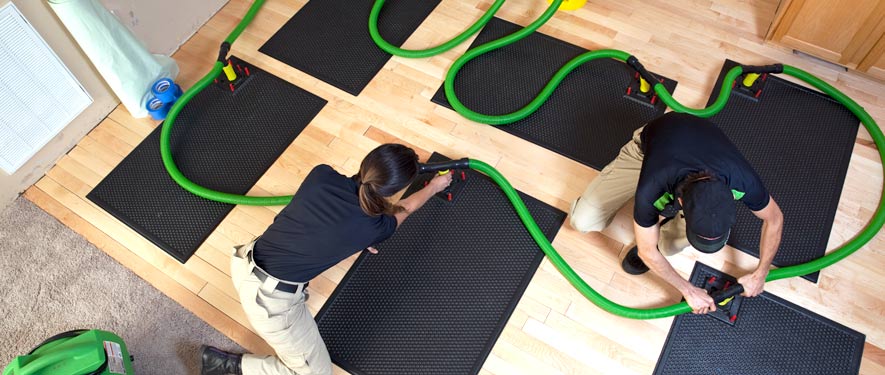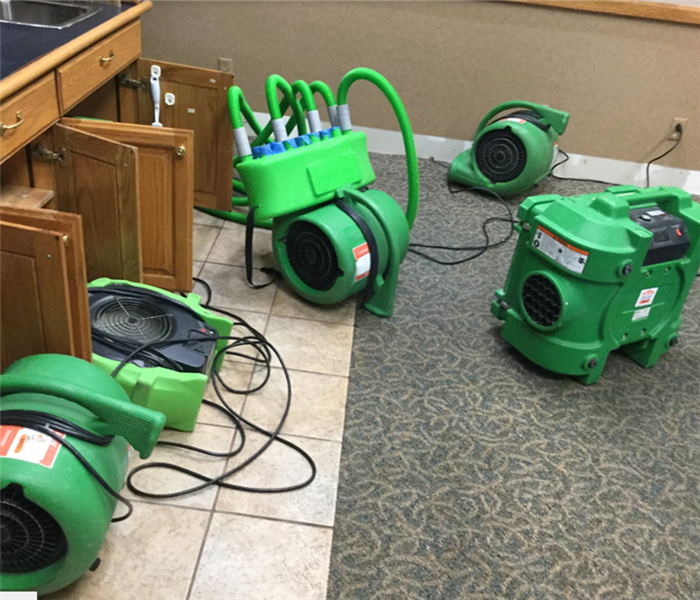
Step 4: Drying and Dehumidification
Our Water Damage Restoration Process
Drying After Water Damage Restoration
When the bulk of the water has been removed from your property, there is still a lot more to be done. Water tends to sneak and hide just in carpet padding and behind walls, and any surface that isn’t properly dried will create a threat for mold growth.
Free Water Mitigation Estimates
If your property has experienced a hot water heater burst, flood, or any other kind of water damage, we’re here to help. Call or contact us anytime.
What Happens After Water Removal?
After standing water is gone, it’s time to find the hidden pockets of water and begin drying the property. We do this by:
- Creating a custom drying plan for your property. This includes mapping the wet areas, planning what and how many pieces of equipment that space needs and setting goals.
- Removing wet carpet pad and finding hidden water behind walls. We use sophisticated equipment that detects moisture behind walls.
- Setting professional drying equipment like air movers, dehumidifiers, and desiccants.
- Daily monitoring takes place until your water clean up plan is complete.
- Scientifically validated results. Professional water restoration companies have hard data to prove they did the job right.
We’re a 24-Hour SERVPRO in Fort Worth
We are available for water damage restoration near you. Our office is on Highway 121, and we dispatch immediately after your call. We respond to flood cleanup requests every day of the year.
The Water Restoration Drying Process
Drying / Dehumidification
Our Professionals will use room measurements, temperature, and relative humidity to determine the optimal number of air movers and dehumidifiers to dry your home or business. We’ll carefully monitor the progress using moisture meters until the materials return to acceptable drying goals.
- Use Dehumidification Equipment
- Use Monitoring Equipment to Track Progress
Monitor Floor and Walls
We check the moisture levels to monitor the drying process.
- Monitor Floors
- Monitor Walls
Drying Equipment
- Industrial-grade dehumidifiers help prevent secondary water damage like swelling and warping of floors, walls, and furniture.
- High-speed air movers create airflow across walls, carpets, pads, and furniture, which accelerates the evaporation of moisture.





 24/7 Emergency Service
24/7 Emergency Service




